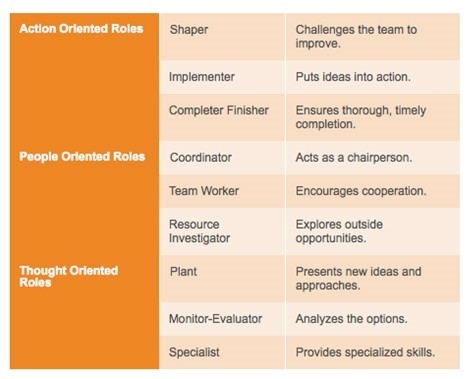Teams of all shapes and sizes have found themselves struggling during the coronavirus pandemic. With tight time lines, low budgets and stress on employees to produce superior results, leaders have been trying to overcome the challenges these unprecedented times have been throwing at them.
It’s quite evident that weak teams will be crushed by the smallest amount of tribulation. Mediocre teams will survive it, but the highest performing teams will continue to thrive and grow.
Here, I’ve identified five special ingredients required to develop high performance teams:
#1 Have Defined Roles and Complementary Skills
A team may have one large task but there are several smaller tasks that make up that large task. And each of these smaller tasks requires different skills. While some may demand technical skill, others may lean towards the creative side and require someone who can figure out a way to turn the mercurial ideas into something solid and real.
You cannot expect your team to function well if all the individuals possess the same skill set. The point is, each team member must bring something unique to the table. Firstly, this helps each team member better understand their role and focus on the action steps that will bring the team closer to the larger goal. Secondly, it makes it much easier for you – as a leader – to assign tasks to people with relevant skills.
Moreover, it is best to bring together a variety of personality types that complement each other. Gartner research found that leaders who use complementary leadership saw a 60% increase in their teams’ performance and a 40% increase in their own performance.
So, you must be mindful of the fact that creating a team full of leaders would wreak a havoc. It is highly likely that they will have conflicting views and hence your team will pulled in different directions. On the flip side, you cannot build a high performing team with people who only focus on the details and lose sight of the bigger picture.
Although there are a number of different team role inventories out there, I always prefer Belbin team roles as it’s easy to explain, identify and use.

#2 Share a Co-Created Purpose and Aspirational Goal
According to Harvard Business Review, employees who are intrinsically motivated are three times more engaged than employees who are extrinsically motivated (such as by money). In other words, your team will be willing to go the extra mile if it is driven by intrinsic reasons. My favorite explanation of this concept is by Peter Fuda who through this animation explains that it is better to have your team members driven by a burning desire instead of a burning platform.
While rewards and remuneration can stimulate people temporarily, your team members will intellectually and emotionally commit themselves and make sustained effort if they have a purpose and vision that inspires and excites them.
#3 Have An Aligned Strategy and Implementation Plan
As the Japanese proverb goes, “Vision without action is a daydream. Action without vision is a nightmare.” By finding an inspiring purpose, you have only taken the first step. In order to accomplish that purpose, you should be able to answer the following questions:
- How are you going to achieve this?
- What are your 5 Must-Win Battles?
- Who will do what, where and by when?
#4 Follow a Clear and Methodical Execution Process
Many people tend to get excited about execution and directly jump into activities before they create a plan and connect what they’re doing to the strategy of the organisation. At the end, even the best and most diverse teams with a strong purpose and aligned strategy will fail to deliver if they don’t agree on:
- How they will make decisions
- How they measure progress
- How they will communicate with each other
As a leader, it is your responsibility to ensure you provide others with clear direction and a sense of connection to the strategy of the organisation so they understand how their work dovetails with the organisation’s mission.
#5 Adapt, Learn and Persevere
High performance teams rarely get stuck in a stagnant work process as they are able to spot potential errors ahead of time and adapt its processes to overcome those challenges. They encourage experiments and aren’t afraid to try new ways of doing things. This is why, they are agile enough to change course when they don’t seem to be getting the desired results.
With their ability to adapt, find alternative routes and surmount formidable obstacles, high performance teams can always look for new ways to improve productivity and achieve better results.
Business & Finance Articles on Business 2 Community
(6)








